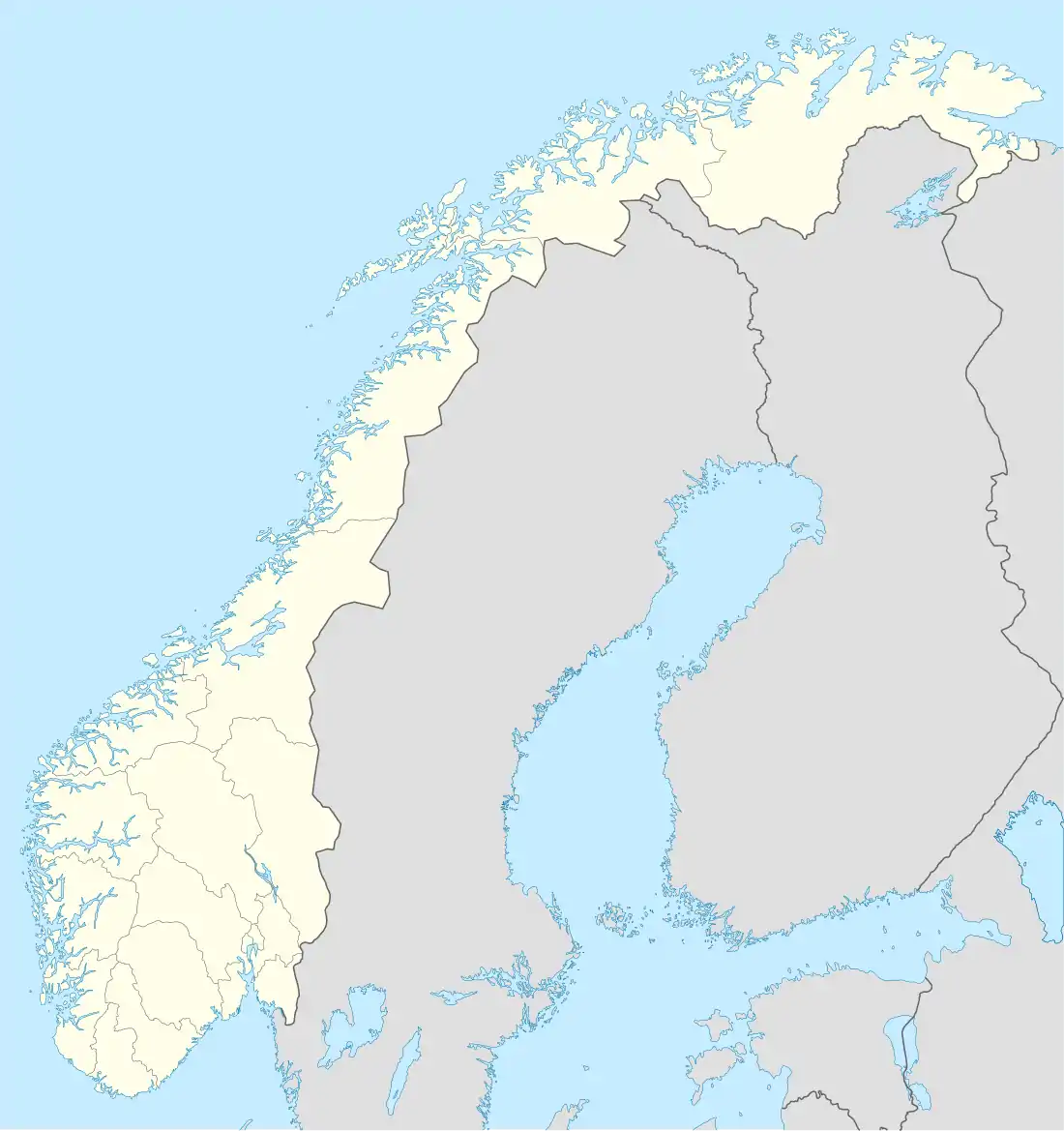Tysvær Church
Tysvær Church (Norwegian: Tysvær kyrkje) is a parish church of the Church of Norway in Tysvær Municipality in Rogaland county, Norway. It is located in the village of Tysværvåg. It is the church for the Tysvær parish which is part of the Haugaland prosti (deanery) in the Diocese of Stavanger. The white, wooden church was built in a long church style in 1852 using designs by the architect Hans Linstow. The church seats about 490 people.[1][2]
| Tysvær Church | |
|---|---|
| Tysvær kyrkje | |
 View of the church (Photo: Jarle Vines) | |
 Tysvær Church Location of the church  Tysvær Church Tysvær Church (Norway) | |
| 59.3315°N 5.4916°E | |
| Location | Tysvær Municipality, Rogaland |
| Country | Norway |
| Denomination | Church of Norway |
| Churchmanship | Evangelical Lutheran |
| History | |
| Status | Parish church |
| Founded | 13th century |
| Consecrated | 1852 |
| Architecture | |
| Functional status | Active |
| Architect(s) | Hans Linstow |
| Architectural type | Long church |
| Completed | 1852 |
| Specifications | |
| Capacity | 490 |
| Materials | Wood |
| Administration | |
| Parish | Tysvær |
| Deanery | Haugaland prosti |
| Diocese | Stavanger bispedømme |
| Type | Church |
| Status | Protected |
| ID | 85700 |
History
The earliest existing historical records of the church date back to the year 1338, but the church was not new that year. The old stave church was likely built in the 13th century since the baptismal font is dated back to that time period. In 1630, the old church was torn down and replaced with a new church. In 1819, the church was damaged in a storm and it was repaired. In 1852, a new church was constructed right next to the old church, slightly to the northeast. Shortly after the new church was completed, the old church was torn down and its materials were sold at auction.[3]
See also
References
- "Tysvær kyrkje". Kirkesøk: Kirkebyggdatabasen. Retrieved 27 September 2020.
- "Oversikt over Nåværende Kirker" (in Norwegian). KirkeKonsulenten.no. Retrieved 27 September 2020.
- "Tysvær kirkested" (in Norwegian). Norwegian Directorate for Cultural Heritage. Retrieved 27 September 2020.